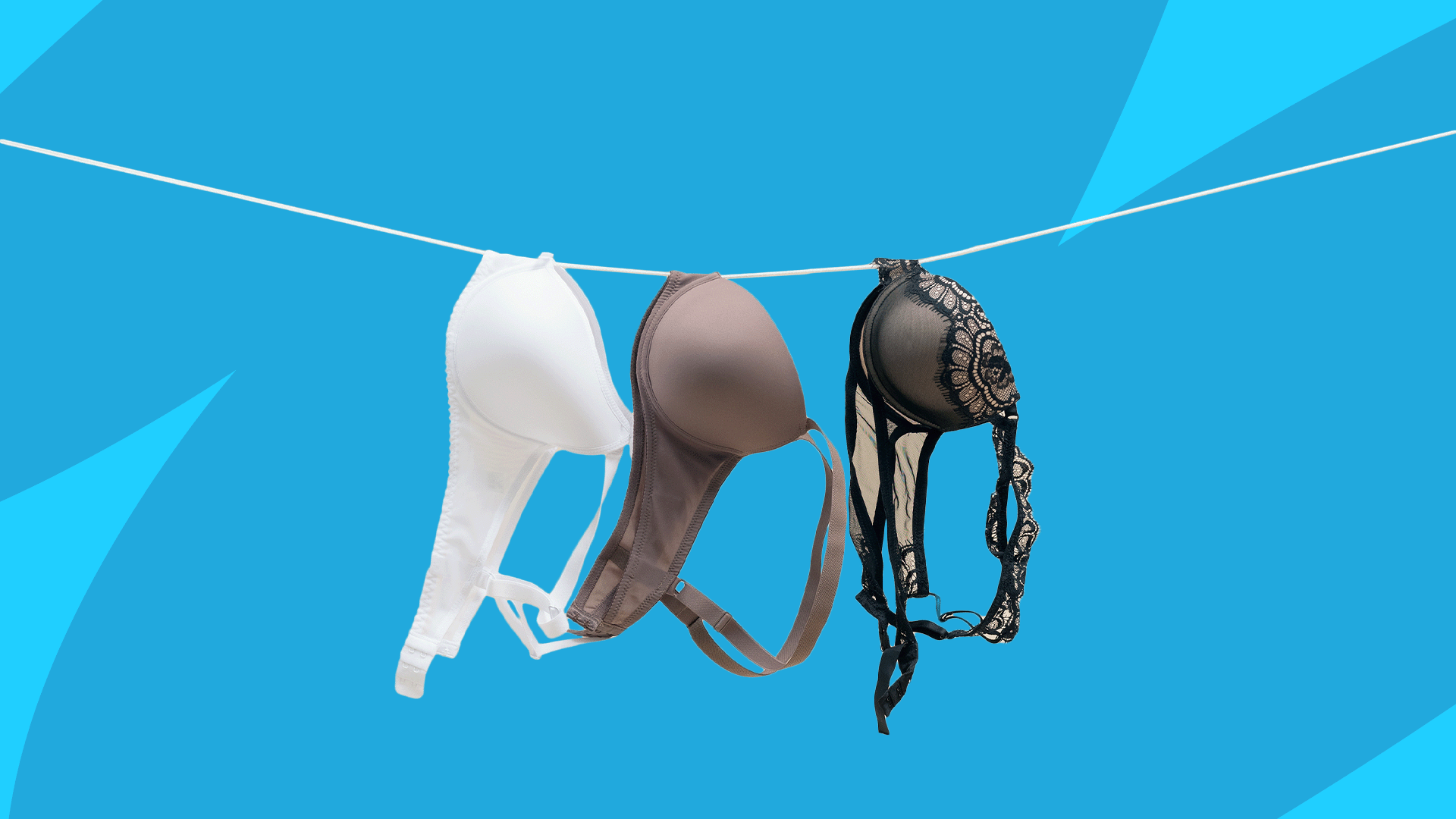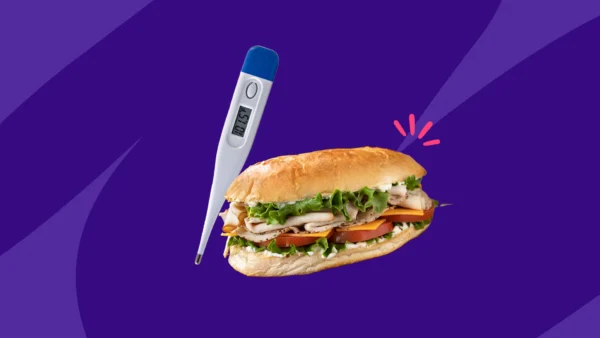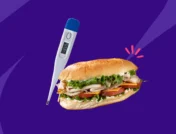Many women experience breast pain, or mastalgia, at some point during their lives. It’s a common condition with different causes. Even so, sharp pain, tenderness, or tightness in one or both breasts can be worrisome when it’s unexpected. The good news is that most breast pain is benign. Usually, mastalgia goes away on its own or is easily treated. In fact, research suggests that only 3% to 6% of breast pain is due to breast cancer. Here is what you need to know about breast pain causes and treatment.
Types of breast pain
Breast pain happens for various reasons and can occur in different locations in and around the breast area, says Aleksandr Shteynberg MD, a double board-certified plastic surgeon specializing in reconstructive and cosmetic surgery at Vantage Plastic Surgery in Brooklyn, New York. Breast pain may be described as tender, sharp, tight, stabbing, throbbing, burning, and radiating, but it’s the quality and location of the pain that helps medical providers determine its cause, Dr. Shteynberg says.
Breast pain that is described as burning, stabbing, and/or sharp, may be due to fibroadenomas, breast cysts, infection of the breast (mastitis), or breast abscesses.
Pain under the breast could be related to persistent moisture and irritation in the skin fold, which is called intertrigo, says Dr. Shteynberg. Similarly, pain in the armpit could be related to an enlarged breast tail, or axillary tail of Spence (tissue that extends up to the armpit), or accessory breast (abnormal breast tissue), that creates large, irritated rolls next to the armpit. “These conditions are often improved with plastic surgery procedures to reduce and lift breasts as well as reducing the axillary tissue,” Dr. Shteynberg says.
Pain near the armpit or on the side of the breast can be either related to the breast or other systemic medical problems, so a physical exam is necessary to determine where the pain is originating from. For example, pain at or near the armpit may be related to muscle strain, viral or bacterial infections, or certain types of cancer, says Dr. Shteynberg.
Pain in the breast area that radiates to your back or pain under your left breast, could be related to heart problems including myocardial infarction, or heart attack, says Dr. Shteynberg. If this is the case, you should seek medical attention immediately.
RELATED: 24 causes of chest pain in adults
13 common breast pain causes
Breast pain can be either cyclic or noncyclic. Cyclic pain can relate to your menstrual cycle, and once periods end in menopause, this pain will resolve. For example, you may experience pain or tenderness in the outer, upper region of your breasts or armpit area. It usually occurs around the same time of your menstrual period each month.
Noncyclic breast pain may be continuous or may return at irregular intervals and is unrelated to your menstrual cycle. Noncyclic pain is usually experienced as tightness, burning, or soreness. The following are common breast pain causes.
1. Menstruation
Hormonal changes before or during menstruation are responsible for up to 75% of breast pain. A rise in the body’s estrogen levels enlarges the milk ducts, and a rise in progesterone causes glands to swell, says Constance M. Chen, MD, a board-certified plastic surgeon and breast reconstruction specialist at Lenox Hill Hospital in New York. This type of breast pain is nothing to worry about.
“Estrogen peaks about mid-cycle during menstruation and progesterone peaks about a week before menstruation,” Dr. Chen says. Breast pain routinely goes away after menstruation ends when the hormone levels drop off. Cyclical breast pain typically ends permanently after menopause. LaTasha Perkins, MD, a family physician at MedStar Georgetown University Hospital in Washington, D.C., recommends logging your menstrual cycles to track breast pain that occurs with hormonal changes.
2. Breast cysts
Cysts are round, mobile, moderately firm (but not hard like a rock), may be fluid-filled, and can occur as a single cyst or as multiple cysts throughout the breast. Breast cysts account for around 25% of all masses occurring in the breasts. Breast cysts can cause pain or tenderness if they are located in an area subject to pressure, injury, friction from a bra, or hormonal changes, says Dr. Perkins. It’s common for people to have breast cysts that cause no pain.
According to breastcancer.org, most breast cysts are benign, and no treatment is needed if they are not causing pain. They most commonly occur among women in their 40s. You’ll likely need an ultrasound to determine if a lump is a cyst or something else.
3. Fibroadenomas
Fibroadenomas are “well-defined, soft or hard, smooth or rubbery, non-cancerous masses in the breast” that commonly occur in younger women aged 15 to mid 30s, says Dr. Shteynberg. Made up of glandular connective tissue, fibroadenomas are benign tumors. Although most fibroadenomas don’t need to be treated, your doctor may recommend surgical removal in certain instances, such as when they keep growing or cause constant pain.
“Both fibroadenomas and breast cysts should be appropriately evaluated by board-certified medical professionals and can be removed by breast surgeons, general surgeons, as well as plastic and reconstructive surgeons,” Dr. Shteynberg says.
4. Breast cancer
Always be sure to follow the recommended mammogram schedule to find potentially cancerous lumps or masses early. Although most masses in the breasts are benign, a new lump or mass that is painless, looks like “microcalcifications” on a mammogram, and is firm is the most common sign of breast cancer. Breast cancer may also cause swelling or lumps around your underarm area of collarbone, discharge, or persistent pain.
Pain rarely occurs with aging, as breast tissue becomes less dense as breasts become more fat-filled. “But, generally speaking, elderly people should not experience breast pain. It’s extremely important to visit the doctor for an evaluation if breast pain is present because our chances of developing breast cancer increase as we age,” Dr. Perkins says.
5. Stress
Research suggests that high levels of stress or anxiety in people with post-traumatic stress disorder, generalized anxiety disorder, and panic disorder may be linked to breast pain.
6. Lack of support
If you do not wear a bra, the lack of support combined with gravity can cause pain. Without support, strain is placed on the tissues, muscles and glands of the breast. “Unless you’re relaxing at home, it’s a good idea to wear supportive undergarments to avoid this,” says Dr. Perkins. Women with large breasts may feel more comfortable sleeping in a bra with moderate support as well.
7. Birth control
Oral contraceptives may be associated with benign breast pain. “Birth control pills alter hormones so that some women may have more breast pain, while other women may have less,” Dr. Chen says.
8. Injury or overuse
Pain in different locations around the breast can also be due to trauma or muscle pain due to overuse, says Dr. Chen.
Injury to the rotator cuff can also cause breast pain, says Dr. Perkins. That’s because the pectoralis minor, one of the chest wall muscles that supports the breasts, can be impacted when the rotator cuff is injured, she explains.
9. Sleeping on your stomach
Breast pain can result from sleeping on your stomach due to poor positioning, extra weight, and/or ill-fitting undergarments, says Dr. Perkins. It’s perfectly fine to sleep on your stomach every once in a while, but be mindful if you feel breast tenderness.
10. Medication side effects
Hormonal medications such as oral contraceptives and hormone replacement therapy (HRT), selective serotonin reuptake inhibitor (SSRI) antidepressants, medications for hypertension, and even some antibiotics can cause breast pain.
11. Pregnancy
During pregnancy, breast engorgement in the mammary glands when milk lets down can cause pain due to an expansion of a woman’s milk ducts, says Dr. Perkins.
What’s more, hormonal fluctuations during early pregnancy result in increased blood flow and fluid retention in the breasts, causing them to feel swollen, sore or tender. Often, this type of pain disappears after the first trimester, and should not be cause for concern.
12. Breastfeeding
Breastfeeding women can have painful breasts due to infection, breast milk engorgement, lactation issues, and clogged milk ducts, Dr. Perkins says. Pain can come from improper latching, or nipple soreness from cracked or raw nipples.
While discomfort during breastfeeding is normal, deeper pain that is accompanied by redness and a sore, hard spot in the breast, it may be an infection called mastitis or a breast abscess.
13. Infection
Usually, mastitis occurs when a milk duct is obstructed. This causes a nursing mother’s milk supply to become backed up, leading to infection that can cause fever, fatigue, and breast pain. However, mastitis can rarely occur for men and non-breastfeeding women, too. If you suspect you have mastitis, reach out to your healthcare provider for an exam and medical attention. Antibiotics may be needed to resolve the issue.
You may have heard that the following things can cause breast pain. The experts are here to tell you, these are not commonly reasons for mastalgia:
- COVID: You may be wondering whether COVID causes breast pain. According to Dr. Chen, breast pain doesn’t typically occur from COVID-19, unless there is an accompanying infection.
- Caffeine: Although there is no direct connection between breast pain and caffeine, excessive caffeine may indirectly cause breast pain due to hormonal shifts, explains Dr. Perkins.
- Gas: Gas is not directly related to breast pain, although it can be confused with heartburn, a GI system symptom, says Dr. Perkins, and it’s important to differentiate the two.
- Fibromyalgia: Fibromyalgia may cause muscular pain and/or tenderness beneath the breast, indirectly leading to breast pain, says Dr. Perkins.
When to worry about breast pain
Up to 70% of women experience breast pain during their lifetime, and there are a multitude of causes. It can come and go or the pain can last for weeks or months. “It is important to understand that there is no cookie cutter answer as to the cause of breast pain,” Dr. Shteynberg says. “That’s why seeing a doctor is so important.”
Your primary care provider should be the first line of defense in evaluating the cause of your breast pain. Your provider can arrange imaging or a specialist consult if needed. See your provider if you have breast pain that doesn’t improve or if you experience breast problems like severe swelling, a lump, or redness or warmth.
Breast pain treatment
Treatment for breast pain depends entirely on the cause of pain. It’s important to note that breast pain may be a sign of something larger that needs to be treated. In other words, it may be a symptom, not a diagnosis. Other symptoms that signal a more serious problem include painless breast lumps, nipple discharge, skin color changes, underarm lumps, and more, says Dr. Perkins. Your primary care physician can evaluate and identify the cause of the pain and help coordinate proper treatment if required.
Treatments for breast pain include:
- Changing the dosage of birth control pills or reducing the dosage of menopausal hormone replacement therapy (HRT) for cyclic breast pain.
- Wearing a supportive bra daily and a sports bra while exercising.
- Using over-the-counter pain relievers such as acetaminophen, ibuprofen and other NSAIDs.
- Engaging in relaxation therapy.
- Eliminating caffeine.
- Eating a low-fat diet.
- Supplementing with flaxseed oil, evening primrose oil, or vitamin E.
Medication for breast pain
If you are experiencing breast pain or tenderness, your doctor may recommend medication to alleviate it, including over the counter pain relievers or prescription medications. For example, Danazol is FDA approved for treating breast pain and tenderness, says Dr. Chen. If breast pain is due to high estrogen levels, then estrogen-blockers such as letrozole or anastrozole, may be helpful. As well, the prescription breast cancer medication Tamoxifen citrate, has been used experimentally to treat breast pain, but its long-term safety for breast pain hasn’t been determined, says Dr. Chen.
| Drug name | Indication | SingleCare savings | Learn more |
| Advil
(ibuprofen) |
Breast pain | Advil coupons | Learn more |
| Tylenol (acetaminophen) | Breast pain | Tylenol coupons | Learn more |
| Danazol | Breast pain and tenderness | Danazol coupons | Learn more |
| Letrozole | Estrogen blocker | Letrozol coupons | Learn more |
| Anastrozole | Estrogen blocker | Anastrozole coupons | Learn more |
| Tamoxifen | Breast pain | Tamoxifen coupons | Learn more |











